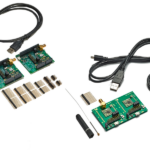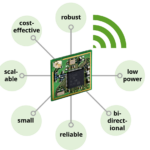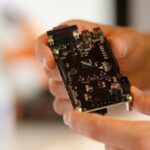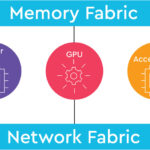 Lattice Semiconductor Corporation announced enhancements to its award-winning Lattice sensAI solution stack for accelerating AI/ML application development on low-power Lattice FPGAs. Enhancements include support for the Lattice Propel design environment for embedded processor-based development and the TensorFlow Lite deep-learning framework for on-device inferencing. The new version includes the Lattice sensAI Studio design environment for end-to-end ML model training, validation, and compilation. With sensAI 4.0, developers can use a simple drag-and-drop interface to build FPGA designs with a RISC-V processor and a CNN acceleration engine to enable the quick and easy implementation of ML applications on power-constrained Edge devices.
Lattice Semiconductor Corporation announced enhancements to its award-winning Lattice sensAI solution stack for accelerating AI/ML application development on low-power Lattice FPGAs. Enhancements include support for the Lattice Propel design environment for embedded processor-based development and the TensorFlow Lite deep-learning framework for on-device inferencing. The new version includes the Lattice sensAI Studio design environment for end-to-end ML model training, validation, and compilation. With sensAI 4.0, developers can use a simple drag-and-drop interface to build FPGA designs with a RISC-V processor and a CNN acceleration engine to enable the quick and easy implementation of ML applications on power-constrained Edge devices.
There is a growing demand in multiple end markets to add support for low-power AI/ML inferencing for applications like object detection and classification. AI/ML models can be trained to support applications for a range of devices that require low-power operation at the Edge, including security and surveillance cameras, industrial robots, and consumer robotics and toys. The Lattice sensAI solution stack helps developers rapidly create AI/ML applications that run on flexible, low-power Lattice FPGAs.
Enhancements to the Lattice sensAI solution stack 4.0 include:
TensorFlow Lite – support for the framework reduces power consumption and increases data co-processing performance in AI/ML inferencing applications. TensorFlow Lite runs anywhere from 2 to 10 times faster on a Lattice FPGA than it does on an ARM Cortex-M4-based MCU.
Lattice Propel – the stack supports the Propel environment’s GUI and command-line tools to create, analyze, compile, and debug both the hardware and software design of an FPGA-based processor system. Even developers unfamiliar with FPGA design can use the tool’s easy-to-use, drag-and-drop interface to create AI/ML applications on low-power Lattice FPGAs with support for RISC-V-based co-processing.
Lattice sensAI Studio – a GUI-based tool for training, validating and compiling ML models optimized for Lattice FPGAs. The tool makes it easy to take advantage of transfer learning to deploy ML models.
Improved performance – by leveraging advances in ML model compression and pruning, sensAI 4.0 can support image processing at 60 FPS with QVGA resolution or 30 FPS with VGA resolution.






Leave a Reply